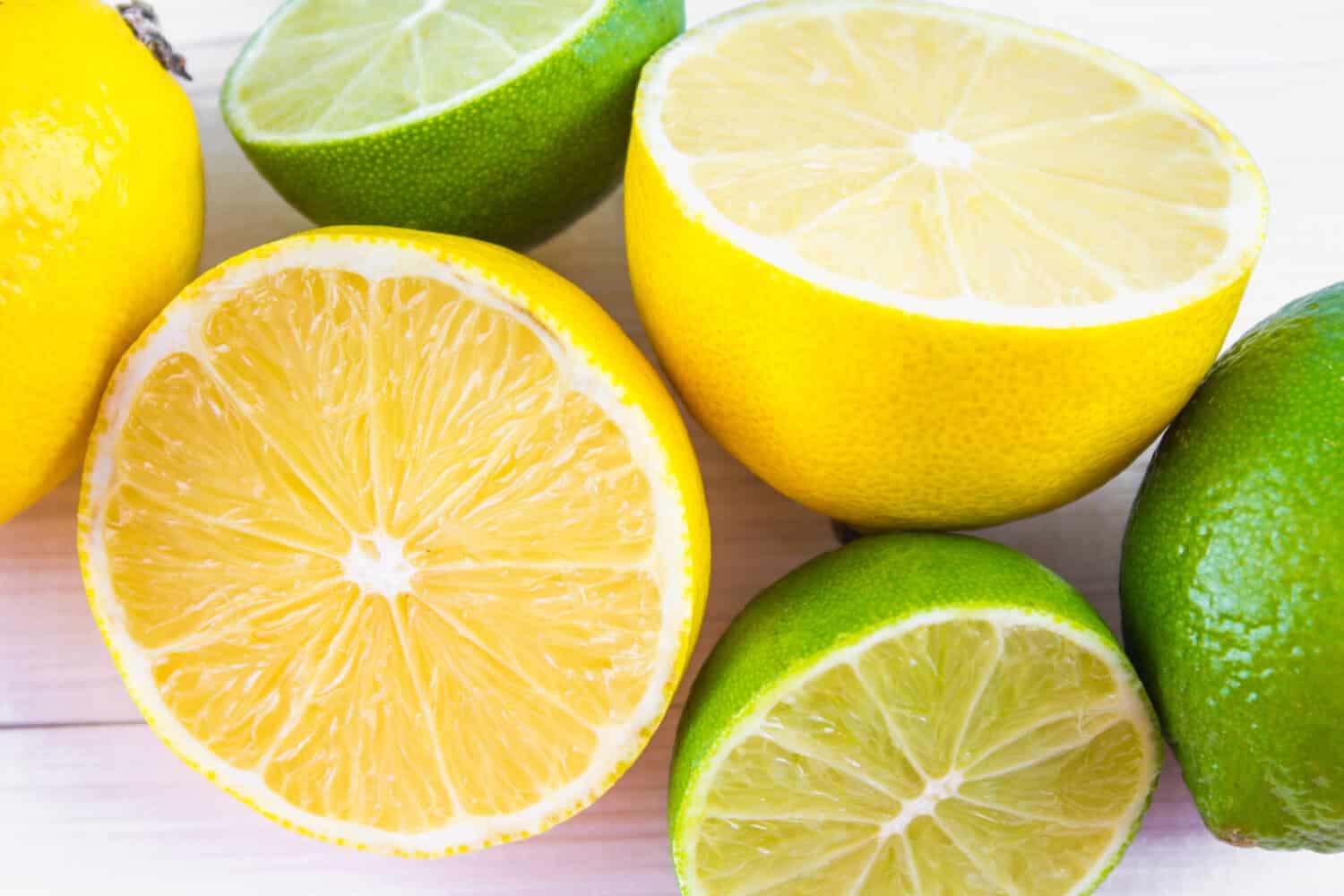While limes and lemons are both citrus fruits with similar nutritional profiles, there are distinct differences between them. These fruits differ in their appearances, flavor profiles, and culinary and household uses. They also grow in different areas of the world. However, despite their differences, both fruits are packed with vitamins and minerals. Let us take a closer look at these popular citrus fruits and see how they compare.
- The must-have convenient reference guide for every home cook!
- Includes more than 8,000 substitutions for ingredients, cookware, and techniques.
- Save time and money on by avoiding trips to grab that "missing" ingredient you don't really need.
Lime vs. Lemon: Differences and varieties of both
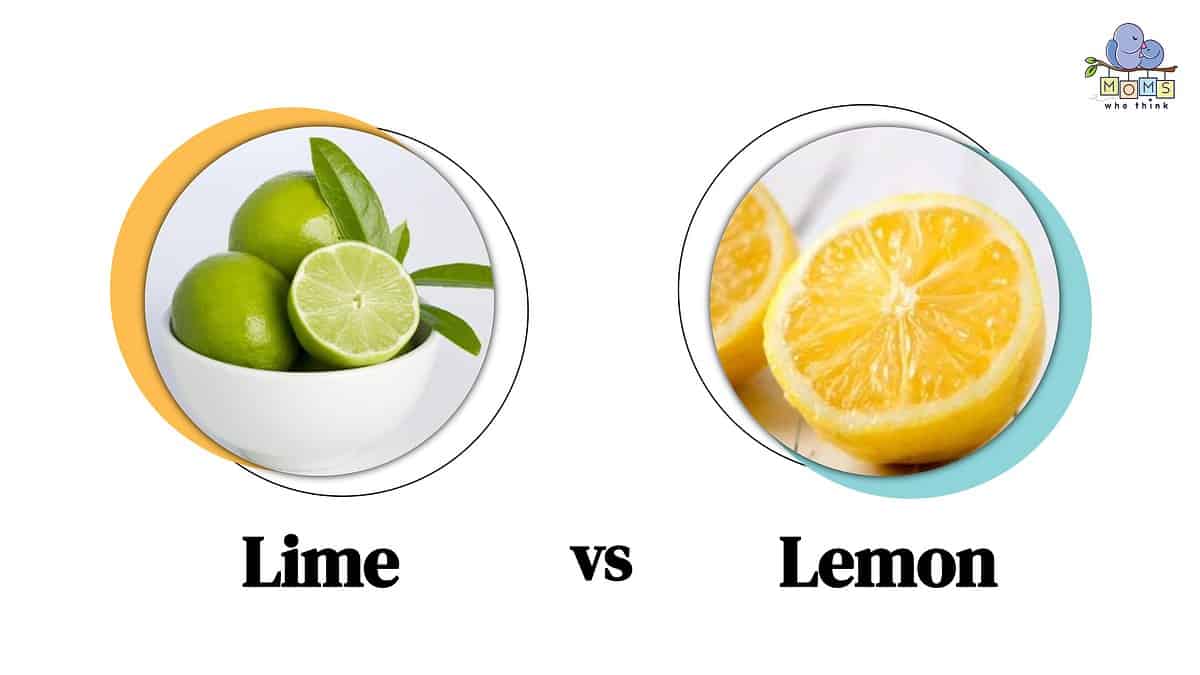
The most obvious difference between these two citrus fruits is their colors. Limes are bright green, whereas lemons are bright yellow. However, some lime varieties, like the Persian lime, lean toward a slightly yellow hue when they ripen. Typically, limes are smaller than lemons. Lemons also have a more elongated shape than limes.
While both fruits are sour, their flavor profiles differ. Both have high levels of acidity, but lemons are slightly more acidic than limes. Limes are tarter with a more intense, zesty flavor. Their taste is more bitter, too. Lemons tend to be sweeter because they have slightly more sugar than limes.
Lime vs. Lemon: Lime varieties to know
Limes and lemons come in many varieties. Key lime, also known as Mexican lime, is probably the best known because of the popularity of key lime pie. Here are a few other kinds of limes.
- Bearrs Limes – Also known as Persian limes, this kind of lime is seedless and has a thick skin.
- Tahiti Limes – Very similar to Persian limes, this lime is less acidic than others and has juicy fruit.
- Philippine Limes – Grown in the Philippines, this lime hybrid is actually orange. The juice is very sour, but the rind itself is sweet.
- Finger Limes – Sometimes called caviar lime, this lime is long and shaped like a finger. Inside, there are small pearls that resemble caviar. When bitten into, these pearls release a refreshing, sour juice.
Lime vs. Lemon: Lemon varieties to know
Lemons also come in many varieties. While the Meyer lemon is probably the best known, here are a few other kinds to consider.
- Avalon Lemons – This lemon is commonly used to make lemon concentrate because it has a lot of juice.
- Buddha's Hand Lemons – Like finger limes, this lemon is finger-shaped. It has no pulp, juice, or seeds. The solid rind makes it a popular choice for making lemon zest or lemon candy.
- Eureka Lemons – Like the Meyer lemon, this variety is one of the many lemons sold in grocery stores. It grows year-round, making it popular with gardeners.
- Lisbon Lemons – Another lemon frequently found on the produce aisle, this lemon has a smooth, thin skin.
While farmers cultivate lemons all over the world, limes grow in tropical or subtropical areas. For this reason, limes often appear in regional dishes like guacamole and curries. Lemons are extremely versatile, often used in both baking and cooking.
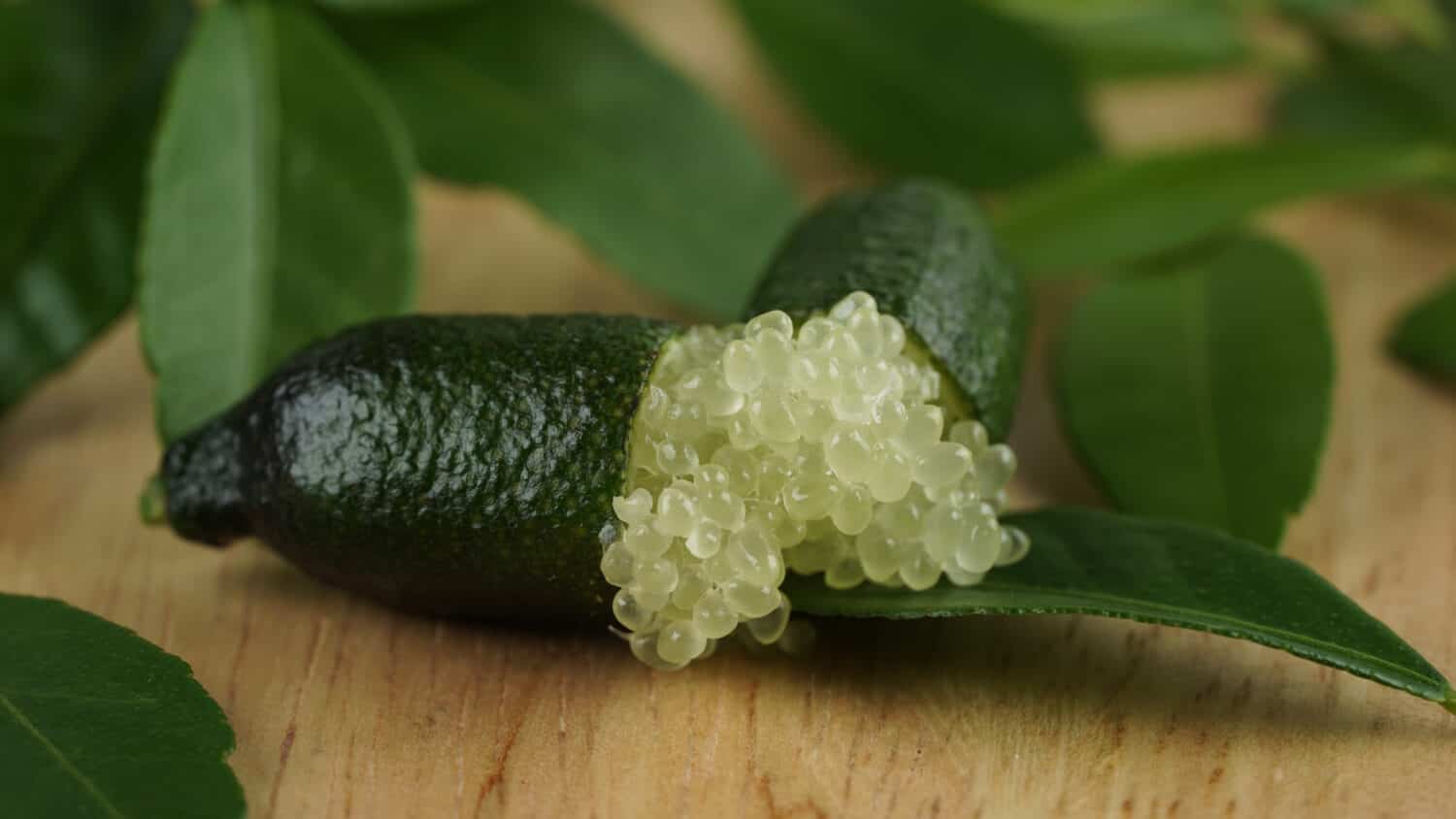
©jomphol/Shutterstock.com
Lime vs. Lemon: Key differences
Below is a table presenting the key differences between limes and lemons.
| Lime | Lemon | |
|---|---|---|
| Appearance | Their colors vary from a deep, dark green to a light green. Typically, limes are smaller than lemons. | Lemons range from almost white to a bright yellow color. They are larger than limes and have an elongated shape. |
| Flavor | Limes are more bitter with an intense tangy flavor. | While lemons are sour, they tend to be sweeter than limes. |
| Regional Differences | They grow best in the tropics or subtropics. | Found in the U.S., Mexico, Spain, and Greece, lemons grow in many different regions. |
| Uses | Limes appear in cocktails, regional dishes like salsas and chutneys, and desserts. | Lemonade is a popular drink. Additionally, lemons flavor seafood and chicken dishes. Bakers frequently use lemons in pies, tarts, and other baked goods. |
In addition to adding a burst of tangy flavor to dishes and drinks, both fruits offer impressive health benefits.
Lime vs. Lemon: Nutritional information and health benefits
Limes and lemons contain impressive amounts of minerals and vitamins, including potassium, calcium, and magnesium. Additionally, limes and lemons have large amounts of Vitamin C. They are low in protein but have a good amount of fiber. Both are low in calories.
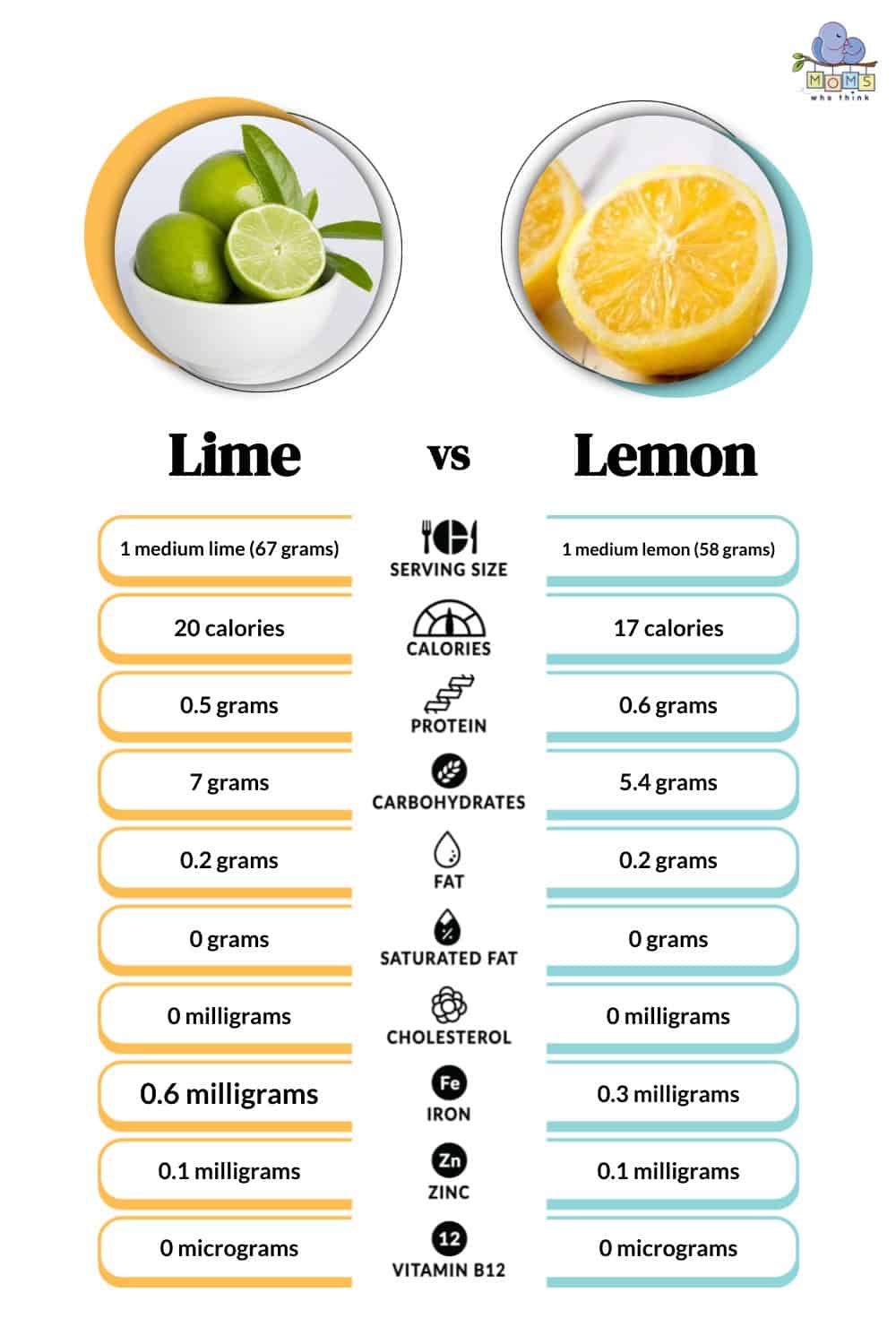
Lime vs. Lemon: Health Benefits
Limes and lemons are healthy fruits that offer many health benefits, including reducing inflammation in the body, supporting heart health, and collagen production.
- Both are rich in Vitamin C. Vitamin C is important because it aids the body's immune system. It helps the body absorb iron and helps the skin stay healthy.
- Antioxidants, including Vitamin C, help reduce the risk of chronic illness and aging.
- Healthy digestion is another key benefit of eating limes and lemons. The citric acid in both breaks down food in the stomach. Their acidity also relieves nausea. If you feel sick to your stomach, drinking lime or lemon-infused water can settle an upset tummy.
- Weight Management is another popular use of limes and lemons. Since both are low in carbohydrates and aid in digestion, many people incorporate them into their diet plans.
- Hydration is another benefit. Both fruits are water-rich and help maintain fluid in the body.
- Collagen production is enhanced by the Vitamin C found in these fruits. Their antioxidants also aid in skin protection.
- Heart health is another reason to incorporate these two fruits into your diet. Fiber, Vitamin C, and antioxidants all contribute to improving blood vessels and lowering blood pressure.
It is important to remember that while limes and lemons provide these benefits, incorporating a variety of fruits and vegetables into your diet is key. Consume limes and lemons as part of a balanced diet.
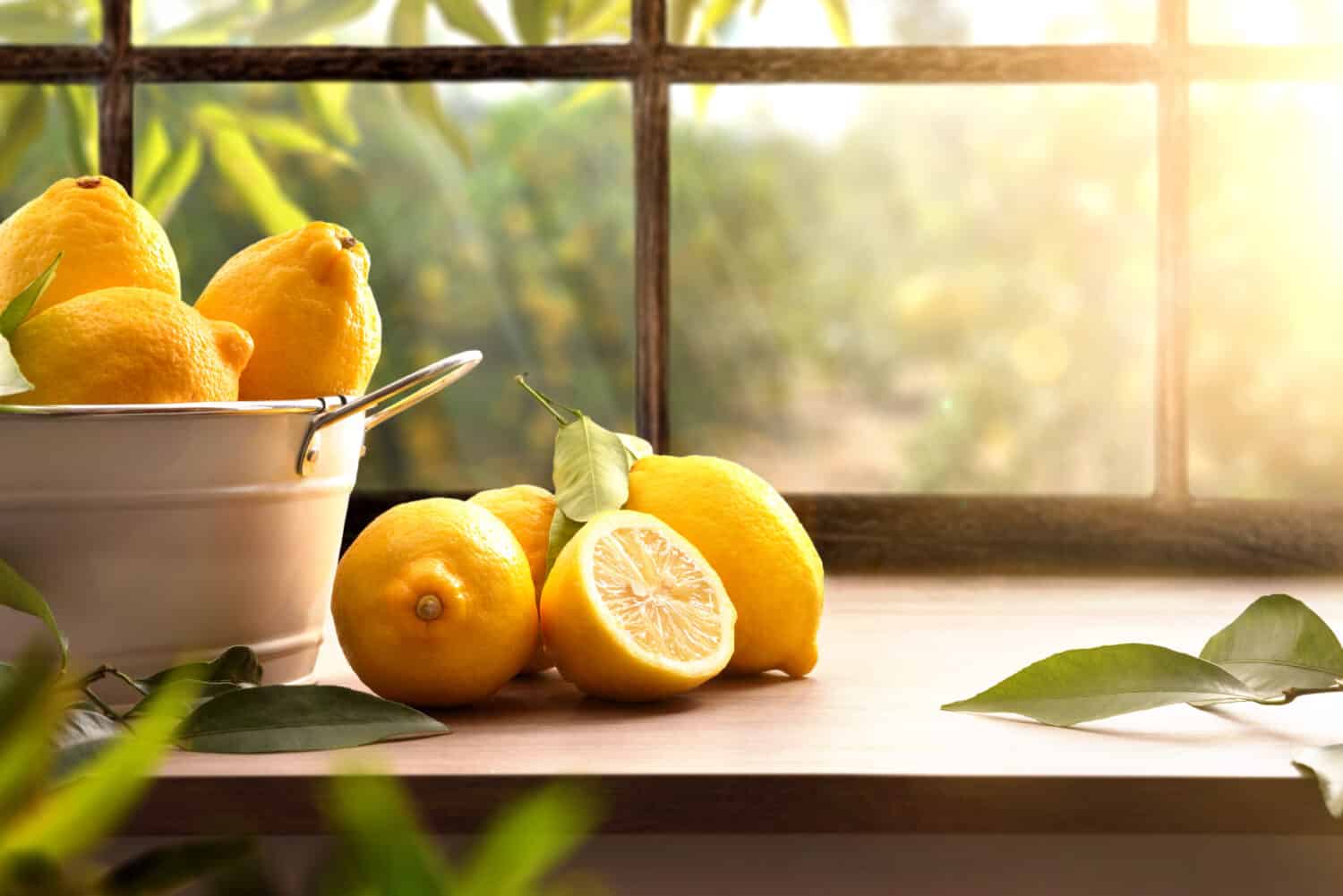
©Davizro Photography/Shutterstock.com
Lime vs. Lemon: Cooking and household uses
Now that you know about the differences and health benefits of limes and lemons, what can you do with each one? Both are extremely versatile fruits to have in the kitchen. They also have many household uses.
Cooking Suggestions
- Marinades and Dressings – Use a mixture of lime or lemon juice with herbs, garlic, and olive oil to create your own marinade. Or perhaps combine lime or lemon juice with Dijon mustard, honey, or herbs for a delicious salad dressing.
- Seafood and Poultry – Lemon or lime zest tastes wonderful on roasted or grilled chicken. You can also squeeze lemon or lime juice over grilled food just before serving to add a bit of tangy flavor. One recipe to try is this garlic lime shrimp and pasta.
- Sauces and Salsas – Using a mixture of lime or lemon juice, make a sauce for pasta with broth and herbs. Both fruits are great added to salsa or as a topping for tacos.
- Desserts – Of course, both are great in pies, especially key lime pie or lemon icebox pie. You can also add lime or lemon zest to cookies and scones for a citrus-flavored treat.
- Beverages – Limes and lemon are popular in both alcoholic and non-alcoholic drinks. Lemonade and limeade are extremely popular. Make your own flavored water by adding slimes of either fruit to a pitcher of water.
- Infusions and Garnishes – For a flavorful cooking oil, infuse lime or lemon zest with olive oil. Also, lime or lemon slices or wedges always look wonderful as a garnish.
- The must-have convenient reference guide for every home cook!
- Includes more than 8,000 substitutions for ingredients, cookware, and techniques.
- Save time and money on by avoiding trips to grab that "missing" ingredient you don't really need.
Household Use Suggestions
- Natural Household Cleaners – Mix lemon juice with water to create an all-purpose household cleaner. Lemon juice also removes stains from cutting boards and plastic containers. Moreover, mix lemon juice with baking soda to make a natural fridge cleaner.
- Natural Deodorizer – Use the peels to remove strong odors from the hands, cutting board, or cooking utensils. You can also toss the peels into the garbage disposal to deodorize it. Additionally, you can place the peels in the bottom of trash cans to absorb any stinky smells.
- Polishes – Lemon juice makes an excellent polish. Mix it with olive oil to make a natural furniture polish. Or use lemon juice and baking soda to polish silver. Additionally, lemon or lime juice will remove goo or other sticky stuff from surfaces.
- Room Fragrance – Simmer lemon or lime peels with cinnamon or cloves on the stovetop.
Remember that lemon and lime juice may have a bleaching effect on some countertops or fabrics. To be safe, test a small area before using it extensively. As with all-natural household solutions, be sure to wipe or rinse down the area thoroughly.

©Pixel-Shot/Shutterstock.com
In Summary
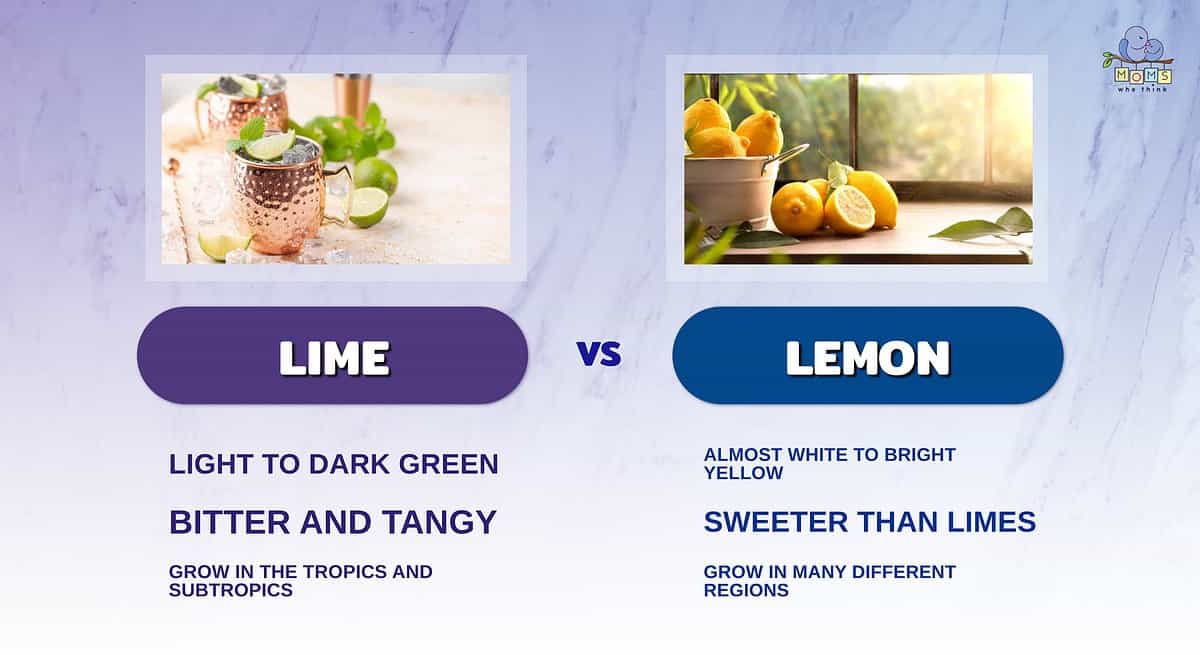
- Limes and lemons are easily distinguishable based on color. Limes are light to dark green, while lemons are white to bright yellow.
- While lemons are sour, they tend to be sweeter than bitter and tangy limes.
- Limes grow in tropics and subtropics, while lemons grow in a wide variety of regions.
Limes and lemons are amazing tiny fruits that look and taste differently but have similar nutritional profiles. Limes are smaller and typically green, while lemons are larger and come in various shades of yellow. Popular in both cooking and household use, limes and lemons offer many benefits. They both contain high levels of Vitamin C and hydration. Not only are they low-calorie fruits, they also have very little carbohydrates. Moreover, the acidic nature of both fruits aids the digestion system and helps with nausea. These delicious citrus fruits can be enjoyed as part of a well-rounded and balanced diet.
Print
Lemon Basil Pork Chops
- Yield: Makes 4 servings 1x
Ingredients
1 egg, lightly beaten
2 teaspoons lemon juice
3/4 cup seasoned bread crumbs
2 Tablespoons butter, melted
3 teaspoons grated lemon peel
2 teaspoons dried basil
4 boneless pork loin chops (1 1/4 inches thick)
Instructions
1. In a shallow dish, combine egg and lemon juice.
2. In another shallow dish, combine the bread crumbs, butter, lemon peel and basil.
3. Dip pork chops in egg mixture, then coat with crumb mixture.
4. Place in a 13×9 inch baking dish coated with cooking spray.
5. Bake, uncovered, at 375° for 30 to 35 minutes or until a meat thermometer reads 160° and juices run clear.
Nutrition
- Serving Size: 1 pork chop
- Calories: 280
- Sodium: 180mg
- Fat: 12g
- Saturated Fat: 5g
- Carbohydrates: 5g
- Fiber: 2g
- Protein: 30g
- Cholesterol: 121mg
The image featured at the top of this post is ©Olya Detry/Shutterstock.com.
